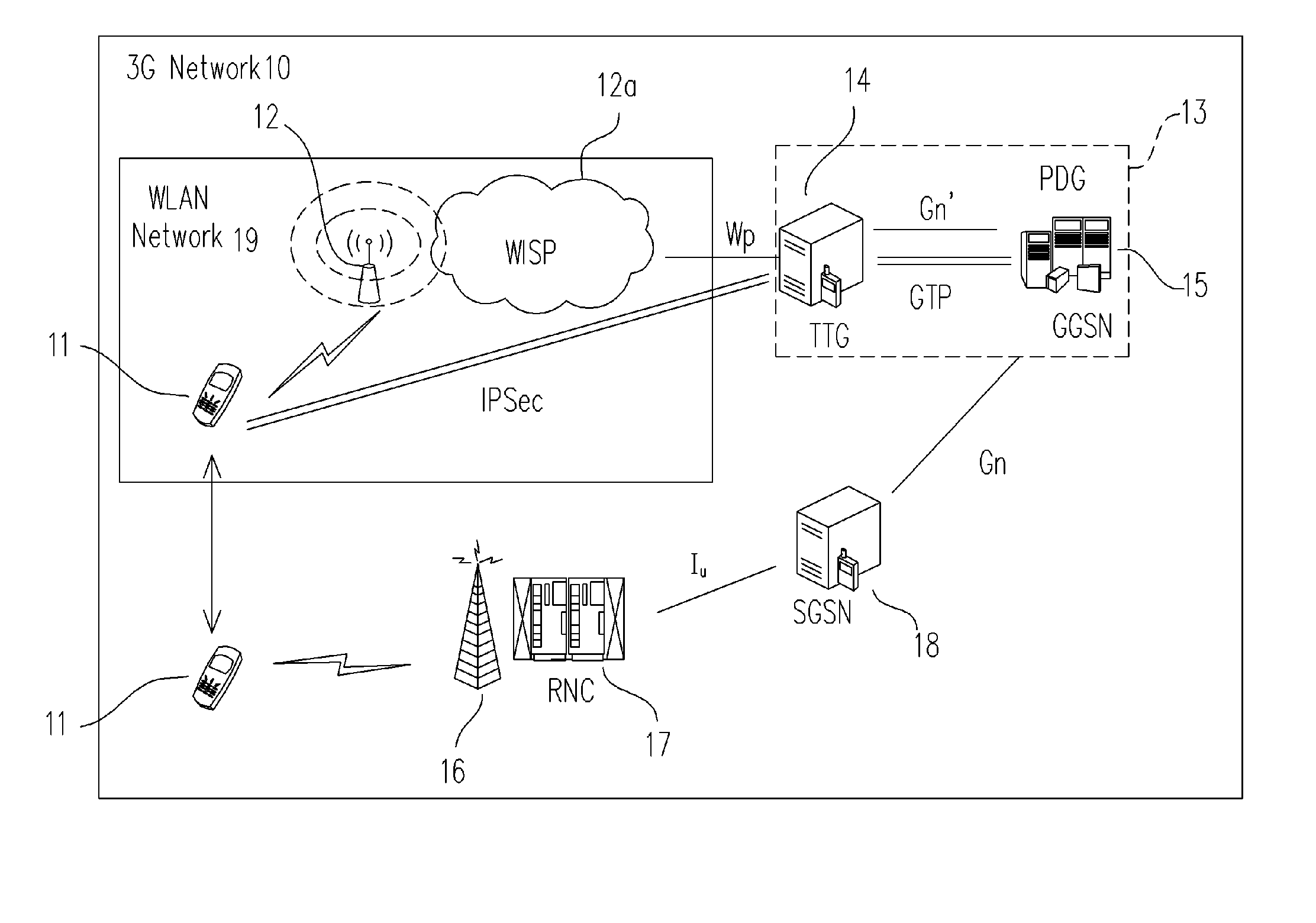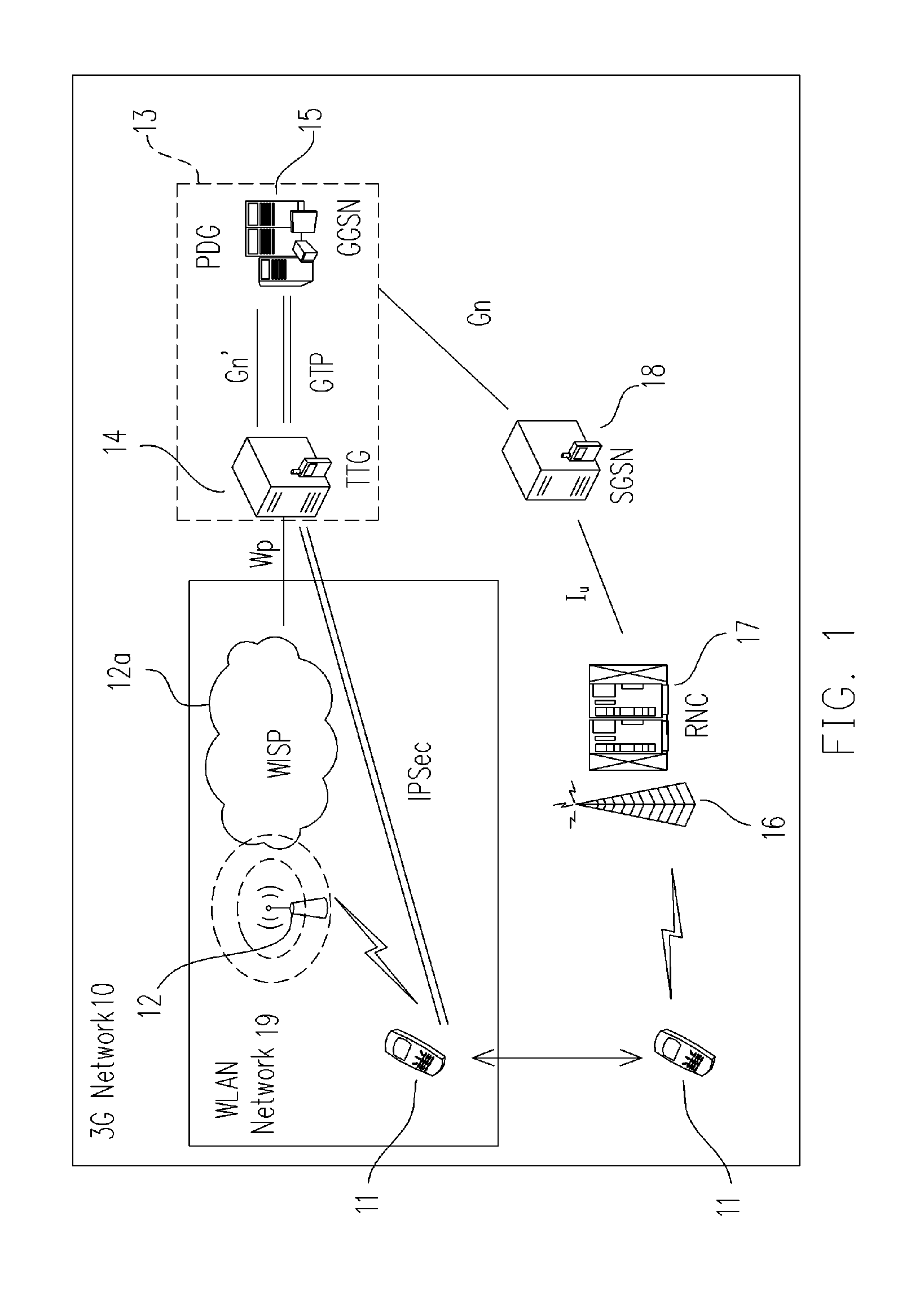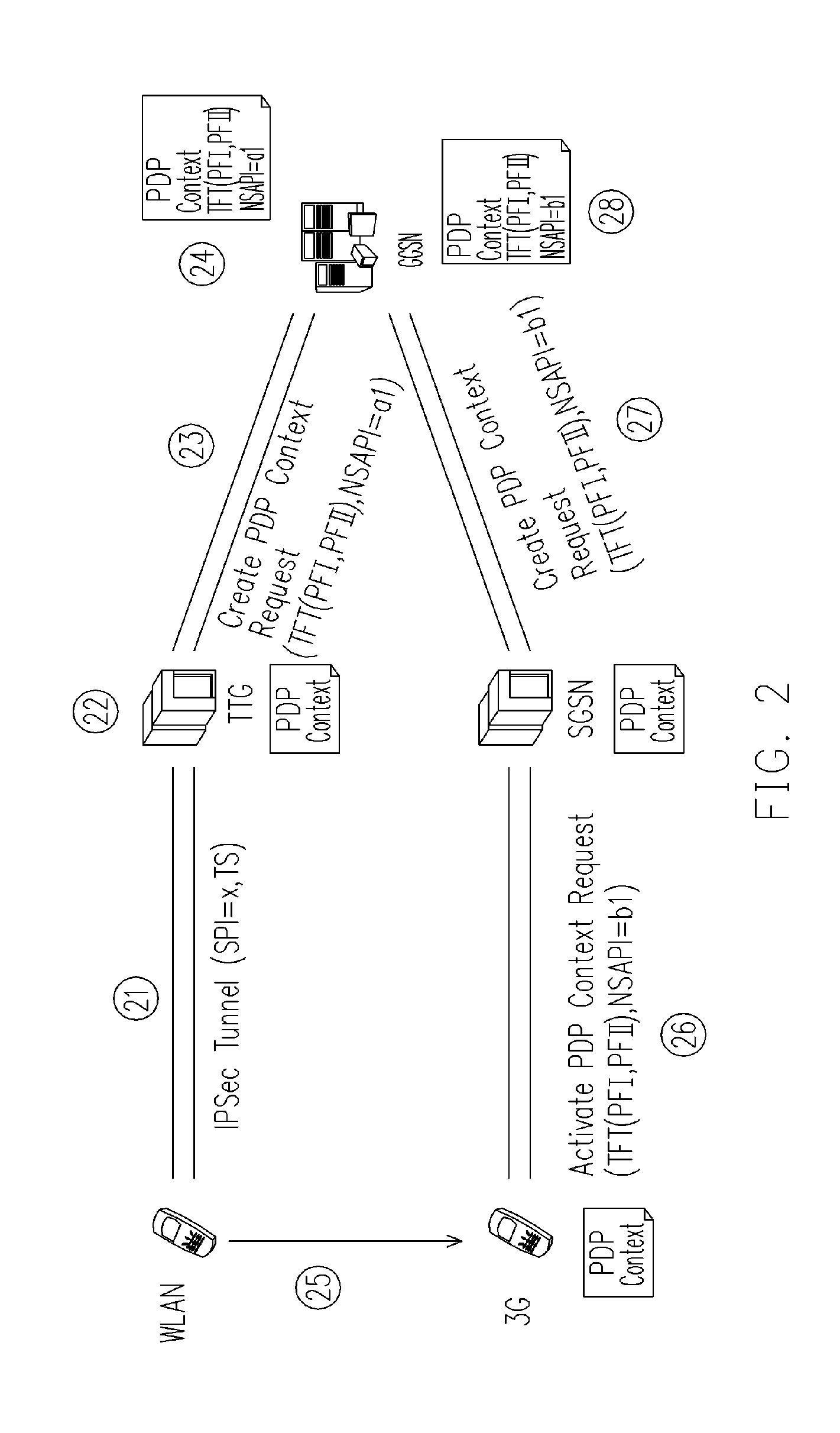Vertical handoff method and system in WLAN/3g integrated networks
a technology of integrated networks and vertical handoff, which is applied in the direction of electrical equipment, wireless commuication services, connection management, etc., can solve the problems of gateway taking some time to rebuild the connection to the ue, unavoidable integration between the wlan system and the 3g system, and packet loss, etc., to reduce handoff latency and packet loss
- Summary
- Abstract
- Description
- Claims
- Application Information
AI Technical Summary
Benefits of technology
Problems solved by technology
Method used
Image
Examples
first embodiment
[0024]FIG. 2 shows the vertical handoff from the WLAN network to the 3G network according to the invention. When the UE wants to access 3G data services, UE has to establish connections to the GGSN (or the PDG). As shown in FIG. 2, to establish the connections, the UE first establish IPSec tunnels toward the TTG by assigning parameters SPI (security private index)=x and TS (traffic selection), as shown in Step 21. The parameter TS includes for example, a TS type field, an IP protocol ID (identification) field, a selector length field, a start port field, an end port field, a staring address field and an ending address field.
[0025] For establishing the GTP tunnels to the GGSN, the TTG has to generate or translate the parameters SPI and TS into TFT (traffic flow template) parameters. The TFT parameter may include more than one packet filters. The TTG should translate the parameter TS in the IPSec tunnel into a packet filter type I (PF I) or TFT(PF I). The translation is straightforwar...
second embodiment
[0030]FIG. 3 shows the vertical handoff from the 3G network to the WLAN network according to the invention. In FIG. 3, the UE accesses 3G data services when UE is located in the 3G network. Then the UE roams from the 3G network into the WLAN network and the UE still wants to continue the same 3G data services.
[0031] If the UE wants to access 3G data services when the UE is located in the 3G network, the UE needs to establish connections toward the GGSN. The UE assigns a new parameter NSAPI (a2) and generates the TFT (PF I) by itself. The UE sends an “Activate PDP Context Request” message with the newly assigned parameter NSAPI (a2) and the TFT (PF I) towards to the SGSN, as shown in Step 31. The SGSN forwards a “Create PDP Context Request” message towards to the GGSN, as shown in Step 32. This “Create PDP Context Request” message includes the TFT (PF I) and the parameter NSAPI (a2). Hence it might be that only one packet filter PFI is built for the TFT in the “Create PDP Context Req...
PUM
 Login to View More
Login to View More Abstract
Description
Claims
Application Information
 Login to View More
Login to View More - R&D
- Intellectual Property
- Life Sciences
- Materials
- Tech Scout
- Unparalleled Data Quality
- Higher Quality Content
- 60% Fewer Hallucinations
Browse by: Latest US Patents, China's latest patents, Technical Efficacy Thesaurus, Application Domain, Technology Topic, Popular Technical Reports.
© 2025 PatSnap. All rights reserved.Legal|Privacy policy|Modern Slavery Act Transparency Statement|Sitemap|About US| Contact US: help@patsnap.com



